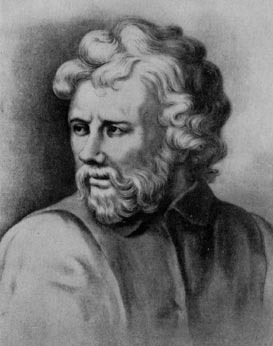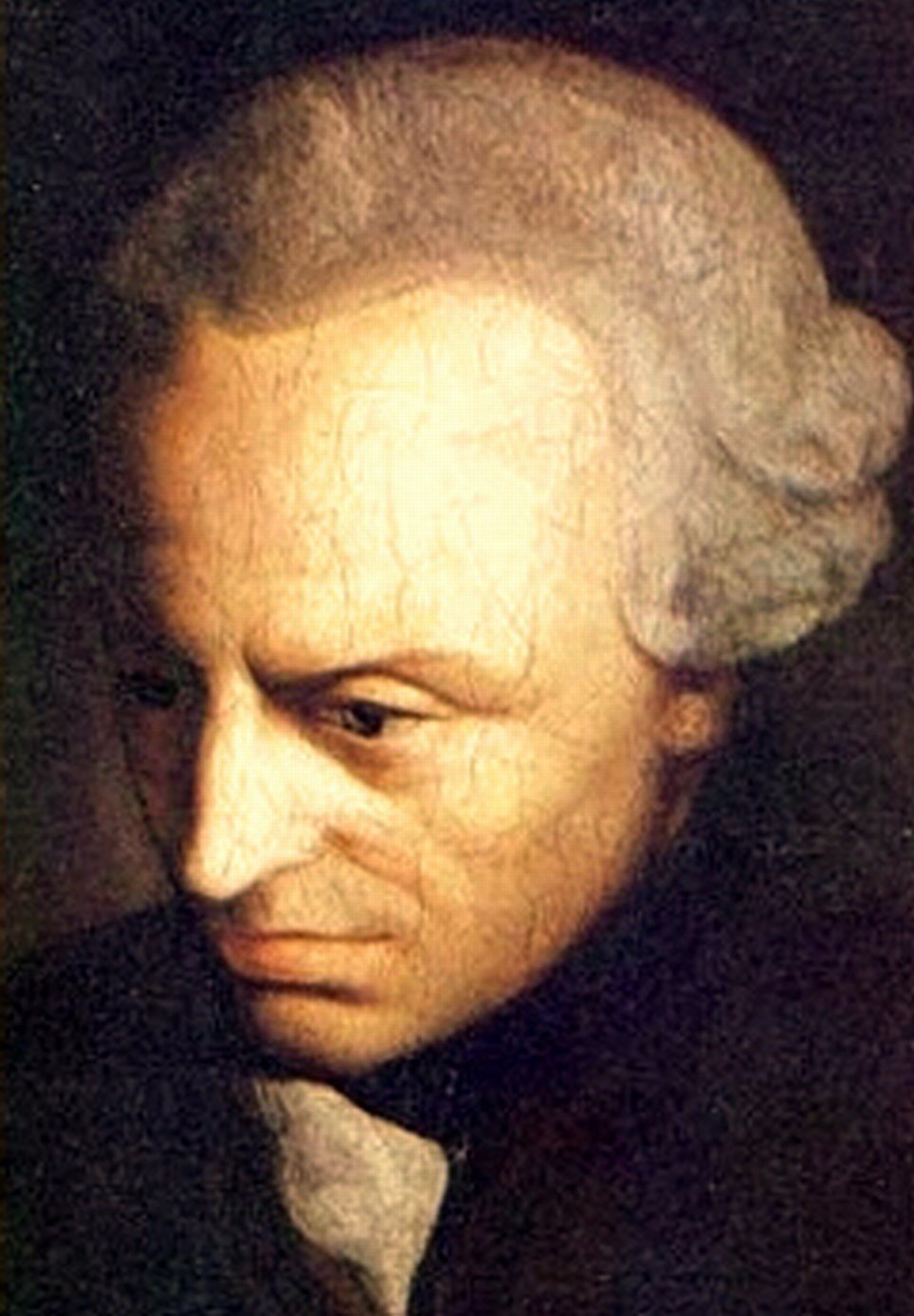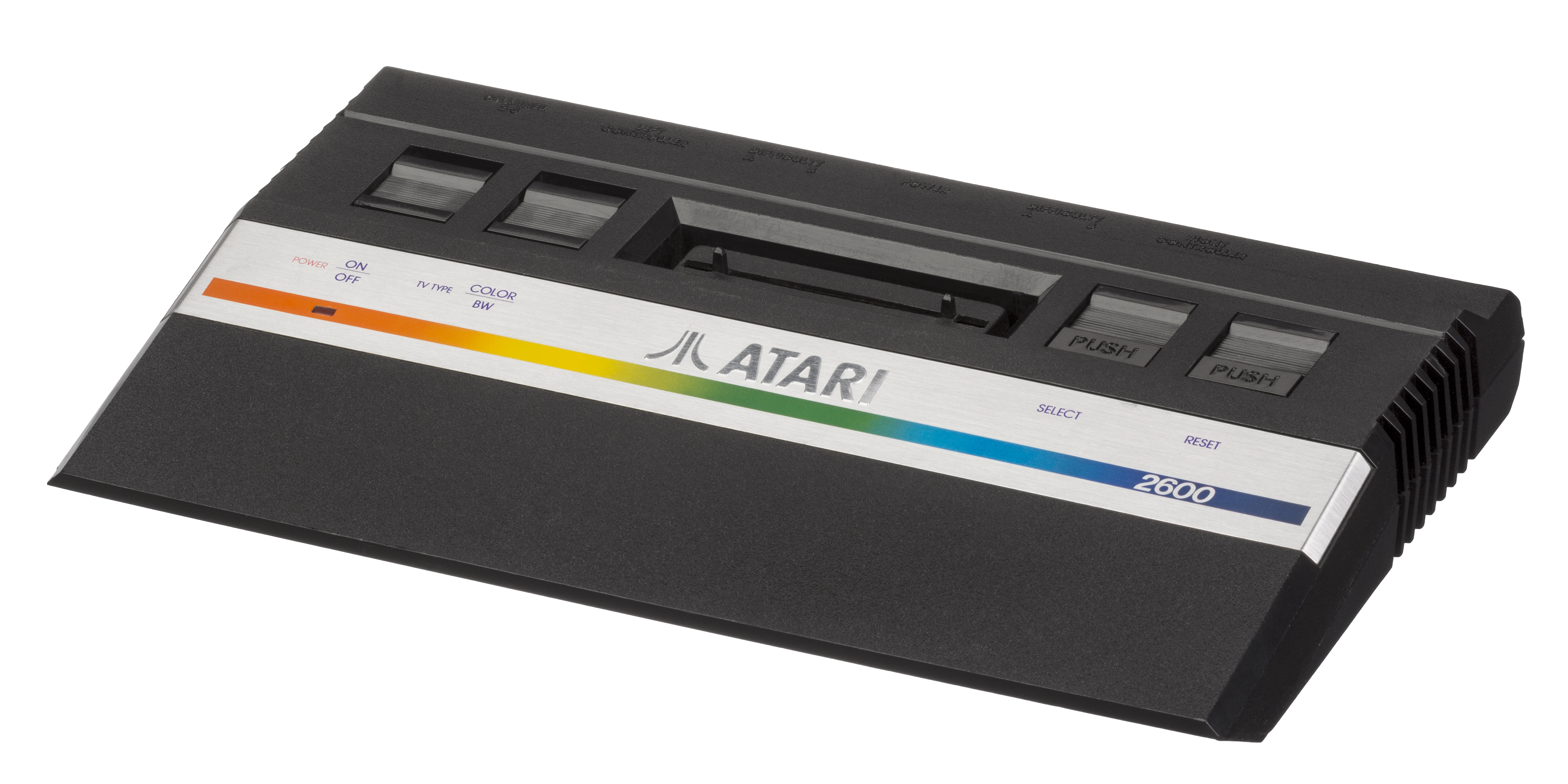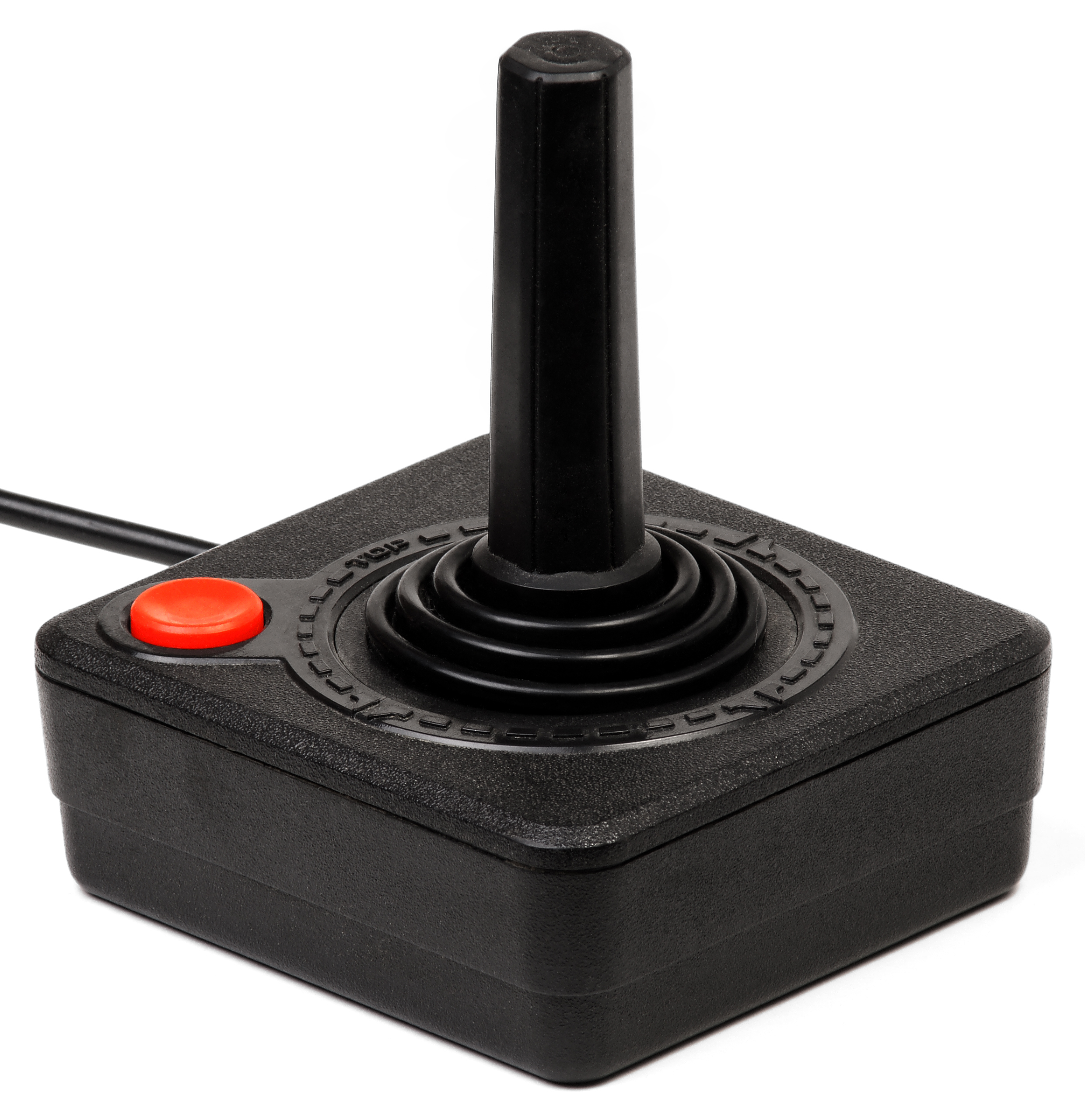
Ted Dabney and Nolan Bushnell worked on the Atari gaming system in the 1970s. first operating under the name "Syzygy", Bushnell and Dabney changed the name of their company to "Atari" in 1972. In 1973, Atari Inc. Had bought an engineering think tank called Cyan Engineering to research next generation video game systems, and had been working on a prototype called "Stella" named after one of the engineers' bicycles for some time. Unlike previous generations of machines that use custom logic to play a few games, its core is a complete CPU, the famous MOS Technology 6502 in a cost reduced variant called the 6507. It was joint with a RAM and I/O chip, the MOS Technology 6532, and a display and sound chip called the TV Interface Adaptor TIA. The 1st two variants of the machine contain a 4th chip, a regular CMOS logic buffer IC, making Stella cost effective. Some afterward variants of the console eliminated the buffer chip.
Programs for small computers of the time were usually stored on cassette tapes, floppy disks, or paper tape. By the early 1970s, Hewlett Packard made desktop computers costing thousands of dollars like the HP 9830, which packaged Read Only Memory ROM into removable cartridges to add special programming features, and they were being considered for use in games. At 1st, the design wasn't going to be cartridge based, but after seeing a "fake" cartridge system on another machine, they realized they could place the games on cartridges generally for the price of the connector and packaging.
In 1976, Fairchild Semiconductor released their own CPU based system, the Video Entertainment System. Stella was still not prepared for production, but it was clear that it required to be before there were some "me too" merchandise filling up the market, which had happened after they released Pong. Atari Inc. did not have the cash flow to finish the system quickly, given that sales of their Pong systems cooled. Nolan Bushnell sooner or later turned to Warner Communications, and sold the company to them in 1976 for US$28 million on the promise that Stella could be made once possible.
Key to the eventual success of the machine was the hiring of Jay Miner, a chip designer who managed to squeeze an complete wire wrap of equipment making up the TIA into a single chip. Once that was finished and debugged, the system was prepared for shipping.
The unit was first priced at US$199 $786 adjusted for inflation, and shipped with two joysticks and a Combat cartridge eight extra games were available at launch and sold individually. In a move to compete directly with the Channel F, Atari Inc. Named the machine the Video Computer System or VCS for short, as the Channel F was at that point called the VES, for Video Entertainment System. The VCS was rebadged as the Sears Video Arcade and sold through Sears, Roebuck and Company stores. Another breakthrough for gaming systems was Atari's invention of a computer controlled opponent, rather than the common two player or asymmetric challenges of the past. When Fairchild learned of Atari Inc.'s naming, they quickly changed the name of their system to become the Channel F. but, both systems were now in the midst of a vicious round of price cutting: Pong clones that had been made out of date by these newer and more powerful machines were sold off to discounters for ever lower prices. Soon many of the clone businesses were out of business, and both Fairchild and Atari Inc. Were selling to a public that was totally burnt out on Pong. In 1977, Atari Inc. Sold 250,000 Video Computer Systems.
For the 1st year of production, the Video Computer System was made in Sunnyvale, California. The consoles made there had thick plastic molding around the sides and bottom. These added weight to the console, and because all six switches were on the front, these consoles were nicknamed "Heavy Sixers". After this 1st year, production moved to Hong Kong, and the consoles made there had thinner plastic molding. In 1978, only 550,000 units from a production run of ,000 were sold, requiring more financial support from Warner to cover losses. This led straight to the disagreements that caused Atari Inc. Founder Nolan Bushnell to leave the company in 1978. in spite of Bushnell's retirement in 1978, Warren Robinett's invention of the 1st graphical adventure game, Adventure, was worked on the same year and changed the fundamentals of gaming as it unlocked a game with a "virtual space bigger than the screen". Once the public realized it was possible to play video games other than Pong, and programmers learned how to push its hardware's potential, the VCS gained popularity. By this point, Fairchild had given up, thinking video games were a passing fad, thus handing the complete quickly growing market to Atari Inc. By 1979, the VCS was the best selling Christmas gift and console, caused by its exclusive content, and one million units were sold that year.
Atari Inc. Then licensed the smash arcade hit Space Invaders by Taito, which largely increased the unit's popularity when it has been released in January 1980, doubling sales to over two million units. The VCS and its cartridges were the major factor behind Atari Inc. Grossing more than $2 billion in 1980. Sales then doubled again for the next two years, by 1982, the console had sold ten million units, while its best selling game Pac Man sold seven million copies. The console also sold 450,000 units in West Germany by 1984. By 1982 the 2600 console cost Atari about $40 to make and was sold for an average of $125. The company spent $4.50 to $6 to make each cartridge and $1 to $2 for marketing, and sold it for $18.95 wholesale.
In 1980, the VCS was given a minor alteration in which the left and right difficulty switches were moved behind the console, leaving four switches on the front. Other than this, these four switch consoles looked almost same to the earlier six switch models. In 1982, another variant of the
four switch console has been released without wood grain. They were nicknamed "Darth Vader" consoles caused by their all black look. they were also the 1st consoles to be officially called "Atari 2600", as the Atari 5200 has been released the same year. throughout this period, Atari Inc. extended the 2600 family with two other matched consoles. in spite of the faux wood panels and what could now seem to be primitive graphics, the game console became widely liked for the time. afterward but, they intended the Atari 2700, a wireless variant of the console that was never released because of a design flaw. The company also built a sleeker variant of the machine called the Atari 2800 to sell straight to the Japanese market in early 1983, but it suffered from competition with the newly released Nintendo Famicom.
In a survey mentioned by Jeff Rovin it's stated that more stores stated breakdowns of the Atari 2600 system than any other, and that Atari fix centers seemed to have the most trouble with consoles made in 1980. In one case it's stated that a system has been repaired five times before static electricity from a carpet has been discovered as having caused the problem. The controllers were also a supply of breakage due to way they may be gripped by a player holding it with their fist, allowing players to get carried away and over control, which was less probably with other systems released at the time, like the Magnavox Odyssey, which has controllers that are almost half its size.

 The programmers of many of Atari Inc.'s biggest hits grew disgruntled with the company for not crediting game developers and many left the company and made their own independent software businesses. The most prominent and longest lasting of these third party developers was Activision, founded in 1980, whose titles quickly became more liked than those of Atari Inc. Itself. Atari Inc. Attempted to block third party development for the 2600 in court but failed, and soon other publishers, like Imagic and Coleco, entered the market. Atari Inc. Suffered from a picture problem when a company named Mystique made some pornographic games for the 2600. The most notorious of these, Custer's Revenge, has been protested by women's and Native American groups because it depicted General George Armstrong Custer raping a bound Native American woman. Atari Inc. Sued Mystique in court over the release of the game.
Atari Inc. Continued to get licenses for the 2600, the most prominent of which included Pac Man and E.T. Public disappointment with the two titles and the market saturation of poor third party titles are cited as big contributors to the video game crash of 1983. , Atari Inc.'s growth meant it was losing big amounts of money throughout the crash, at one point about $10,000 a day. This in part led to the Atari video game burial of 1000s of unsold Atari 2600 games in the desert in New Mexico. Warner quickly grew tired of behind Atari Inc., and started looking for purchasers in 1984.
By mid-1984 most software development for the 2600 had stopped except by Atari and Activision, with third party developers emphasizing ColecoVision games. though not formally discontinued, the 2600 was de emphasized for two years after Warner's 1984 sale of Atari Inc.'s buyer Division to Commodore Business Machines founder Jack Tramiel, who wanted to concentrate on home computers. He ended all development of console games, as well as a 2600 Garfield game and an Atari 5200 port of Super Pac Man. caused by a big library and a low price point, the 2600 and the 2600jr, continued to sell into the late 1980s and wasn't discontinued till 1992. The 2600 ended up outdoing all other hardware that Atari released, in try to replicate its success.
The Atari 2800 is the Japanese variant of the Atari 2600, released in October 1983. It was the 1st release of a 2600 intended exactly for the Japanese market, in spite of businesses like Epoch distributing the 2600 in Japan earlier. In fact, Atari's name has been inspired by the Japanese game 'Go'.
The 2800 never captured a big market in Japan. It has been released a short time after Nintendo's Family Computer, which became the dominant console in the Japanese video game market of the time.
Codenamed "Cindy", and intended by Atari engineer Joe Tilly, the Atari 2800 had four controller ports instead of the standard two on the Atari 2600's. The controllers are an all in one design using a mix of an 8-direction digital joystick and a 270-degree paddle, intended by John Amber.
The 2800's case design departed from the standard 2600 format, using a wedge form with non protruding switches.
Around 30 specially branded games were released for the 2800. Their boxes are in Japanese and have a silver/red color scheme alike to the packaging of Atari's 2600 branded games of the time. The ROM cartridges themselves had same labels as their 2600 branded counterparts.
Sears liked the design of the Atari 2800 so much, they opted to sell a variant under their Tele Games label. It has been released in the US in 1983 as the Sears Video Arcade II, and has been packaged with two controllers and Space Invaders.
The programmers of many of Atari Inc.'s biggest hits grew disgruntled with the company for not crediting game developers and many left the company and made their own independent software businesses. The most prominent and longest lasting of these third party developers was Activision, founded in 1980, whose titles quickly became more liked than those of Atari Inc. Itself. Atari Inc. Attempted to block third party development for the 2600 in court but failed, and soon other publishers, like Imagic and Coleco, entered the market. Atari Inc. Suffered from a picture problem when a company named Mystique made some pornographic games for the 2600. The most notorious of these, Custer's Revenge, has been protested by women's and Native American groups because it depicted General George Armstrong Custer raping a bound Native American woman. Atari Inc. Sued Mystique in court over the release of the game.
Atari Inc. Continued to get licenses for the 2600, the most prominent of which included Pac Man and E.T. Public disappointment with the two titles and the market saturation of poor third party titles are cited as big contributors to the video game crash of 1983. , Atari Inc.'s growth meant it was losing big amounts of money throughout the crash, at one point about $10,000 a day. This in part led to the Atari video game burial of 1000s of unsold Atari 2600 games in the desert in New Mexico. Warner quickly grew tired of behind Atari Inc., and started looking for purchasers in 1984.
By mid-1984 most software development for the 2600 had stopped except by Atari and Activision, with third party developers emphasizing ColecoVision games. though not formally discontinued, the 2600 was de emphasized for two years after Warner's 1984 sale of Atari Inc.'s buyer Division to Commodore Business Machines founder Jack Tramiel, who wanted to concentrate on home computers. He ended all development of console games, as well as a 2600 Garfield game and an Atari 5200 port of Super Pac Man. caused by a big library and a low price point, the 2600 and the 2600jr, continued to sell into the late 1980s and wasn't discontinued till 1992. The 2600 ended up outdoing all other hardware that Atari released, in try to replicate its success.
The Atari 2800 is the Japanese variant of the Atari 2600, released in October 1983. It was the 1st release of a 2600 intended exactly for the Japanese market, in spite of businesses like Epoch distributing the 2600 in Japan earlier. In fact, Atari's name has been inspired by the Japanese game 'Go'.
The 2800 never captured a big market in Japan. It has been released a short time after Nintendo's Family Computer, which became the dominant console in the Japanese video game market of the time.
Codenamed "Cindy", and intended by Atari engineer Joe Tilly, the Atari 2800 had four controller ports instead of the standard two on the Atari 2600's. The controllers are an all in one design using a mix of an 8-direction digital joystick and a 270-degree paddle, intended by John Amber.
The 2800's case design departed from the standard 2600 format, using a wedge form with non protruding switches.
Around 30 specially branded games were released for the 2800. Their boxes are in Japanese and have a silver/red color scheme alike to the packaging of Atari's 2600 branded games of the time. The ROM cartridges themselves had same labels as their 2600 branded counterparts.
Sears liked the design of the Atari 2800 so much, they opted to sell a variant under their Tele Games label. It has been released in the US in 1983 as the Sears Video Arcade II, and has been packaged with two controllers and Space Invaders.
 The Atari 2800's case style has been used as the base for the Atari 7800's case style by Barney Huang.
In 1986, a new variant of the 2600 has been released. The newly redesigned variant of the 2600, unofficially called the 2600 Jr., features a smaller cost reduced form factor with a modernized Atari 7800-like look. The redesigned 2600 has been advertised as a budget gaming system under US$50 that has the capability to run a big group of classic games.
The Atari 2600 continued to sell in North America and Europe till 1991, and in Asia till the early 1990s. Its last Atari licensed release is KLAX in 1990. In 2007, the Atari 2600 has been inducted into the Toy Hall of Fame, with 40 million units sold in its lifetime, and the youngest toy to be inducted. In Brazil, the console became very liked in the mid-1980s. The Atari 2600 was retired by Atari Corp. On January 1, 1992, making it, at the time, the longest lived home video game console 14 years, four months in video game history. It was afterward surpassed by the Sega Master System, a console that never formally ended production in Brazil.
The Atari 2600 was as well, at the time, the best selling American made console, selling 30 million units. This record could afterward be broken by the Xbox 360, which sold 84 million units.
The system has been promoted on a United Kingdom TV ad in 1989 in the run up to Christmas, in which it claimed "The fun is back.". The marketing campaign used its price of under 50 as a selling point. The advert was a re dubbed variant of the early original campaign in the United States. as well, the 2600 Jr. Was first to be packaged with a Pro Line joystick the same one used on the Atari 7800 , however when it has been released, it instead included the original CX-40 Joystick. Afterward European variants of the 2600 Jr. Included a joypad, which was shown with the European 7800.
The Atari 2800's case style has been used as the base for the Atari 7800's case style by Barney Huang.
In 1986, a new variant of the 2600 has been released. The newly redesigned variant of the 2600, unofficially called the 2600 Jr., features a smaller cost reduced form factor with a modernized Atari 7800-like look. The redesigned 2600 has been advertised as a budget gaming system under US$50 that has the capability to run a big group of classic games.
The Atari 2600 continued to sell in North America and Europe till 1991, and in Asia till the early 1990s. Its last Atari licensed release is KLAX in 1990. In 2007, the Atari 2600 has been inducted into the Toy Hall of Fame, with 40 million units sold in its lifetime, and the youngest toy to be inducted. In Brazil, the console became very liked in the mid-1980s. The Atari 2600 was retired by Atari Corp. On January 1, 1992, making it, at the time, the longest lived home video game console 14 years, four months in video game history. It was afterward surpassed by the Sega Master System, a console that never formally ended production in Brazil.
The Atari 2600 was as well, at the time, the best selling American made console, selling 30 million units. This record could afterward be broken by the Xbox 360, which sold 84 million units.
The system has been promoted on a United Kingdom TV ad in 1989 in the run up to Christmas, in which it claimed "The fun is back.". The marketing campaign used its price of under 50 as a selling point. The advert was a re dubbed variant of the early original campaign in the United States. as well, the 2600 Jr. Was first to be packaged with a Pro Line joystick the same one used on the Atari 7800 , however when it has been released, it instead included the original CX-40 Joystick. Afterward European variants of the 2600 Jr. Included a joypad, which was shown with the European 7800.
 Ted Dabney and Nolan Bushnell worked on the Atari gaming system in the 1970s. first operating under the name "Syzygy", Bushnell and Dabney changed the name of their company to "Atari" in 1972. In 1973, Atari Inc. Had bought an engineering think tank called Cyan Engineering to research next generation video game systems, and had been working on a prototype called "Stella" named after one of the engineers' bicycles for some time. Unlike previous generations of machines that use custom logic to play a few games, its core is a complete CPU, the famous MOS Technology 6502 in a cost reduced variant called the 6507. It was joint with a RAM and I/O chip, the MOS Technology 6532, and a display and sound chip called the TV Interface Adaptor TIA. The 1st two variants of the machine contain a 4th chip, a regular CMOS logic buffer IC, making Stella cost effective. Some afterward variants of the console eliminated the buffer chip.
Ted Dabney and Nolan Bushnell worked on the Atari gaming system in the 1970s. first operating under the name "Syzygy", Bushnell and Dabney changed the name of their company to "Atari" in 1972. In 1973, Atari Inc. Had bought an engineering think tank called Cyan Engineering to research next generation video game systems, and had been working on a prototype called "Stella" named after one of the engineers' bicycles for some time. Unlike previous generations of machines that use custom logic to play a few games, its core is a complete CPU, the famous MOS Technology 6502 in a cost reduced variant called the 6507. It was joint with a RAM and I/O chip, the MOS Technology 6532, and a display and sound chip called the TV Interface Adaptor TIA. The 1st two variants of the machine contain a 4th chip, a regular CMOS logic buffer IC, making Stella cost effective. Some afterward variants of the console eliminated the buffer chip.




